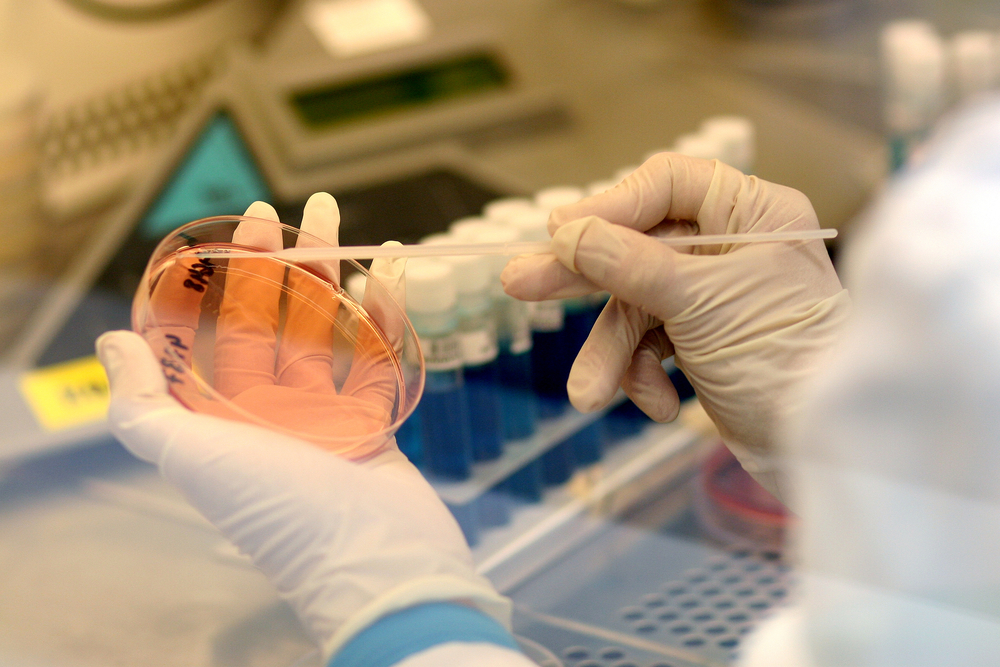Final results of the Sunbelt Melanoma Trial indicate that most patients with stage III melanoma do not benefit from high-dose interferon treatment, largely because improved diagnostic techniques are now capable of detecting small amounts of lymph node activity in many melanomas — amounts too small to be considered high risk.
The article, “Final Results of the Sunbelt Melanoma Trial: A Multi-Institutional Prospective Randomized Phase III Study Evaluating the Role of Adjuvant High-Dose Interferon Alfa-2b and Completion Lymph Node Dissection for Patients Staged by Sentinel Lymph Node Biopsy,” was published in the Journal of Clinical Oncology.
The Sunbelt Melanoma Trial was a prospective randomized trial in more than 3,600 people evaluating high-dose interferon alfa-2b therapy (HDI) or completion lymph node dissection (CLND) in patients with melanoma staged by sentinel lymph node (SLN) biopsy. The first patient who took part in trial was enrolled in 1997.
In 1995, HDI received U.S. Food and Drug Administration (FDA) approval as an adjuvant therapy for patients with high-risk melanoma (multiple large, palpable lymph nodes involved with cancer). However, the development of sentinel lymph node (SLN) biopsy in the 1990s made it possible for physicians to detect microscopic amounts of cancer in lymph nodes that could not be detected by hand.
The trial was led by Kelly McMasters, MD, PhD from the Department of Surgery, University of Louisville School of Medicine, Kentucky, director of the Multidisciplinary Melanoma Clinic, and associate director of the James Graham Brown Cancer Center at the university.
Trial participants with small amounts of melanoma detected in a single lymph node received treatment with HDI or were just observed. The patients were recruited at 79 centers across North America, and were followed for up to 10 years to determine long-term outcomes in terms of disease-free survival (DFS) and overall survival (OS).
Final results showed no survival benefit for adjuvant HDI in patients with a single positive SLN. Furthermore, in those patients with tumor-negative SLN by conventional pathology but with melanoma detected in the SLN by RT-PCR, there was no OS benefit for CLND or CLND+HDI.
Dr. McMasters mentioned that the trial also studied patients with an even smaller amount of cancer in the lymph nodes, detected only at the molecular level using polymerase chain reaction (PCR).
“We started the Sunbelt Melanoma Trial to determine whether interferon therapy was warranted in this relatively lower risk group of stage III patients,” Dr. McMasters said in a news release. “What we found was that there was no evidence that interferon was necessary or helpful for this substantial group of melanoma patients. That saves many patients the toxicity and expense of interferon therapy, which is like having the flu, only worse, for a whole year. While the study did not quite meet its accrual goals and was underpowered to detect very small differences in survival, there was not even a trend for improvement in survival with interferon. Based on these findings, it would be hard to recommend interferon therapy for patients with minimal cancer in just one lymph node.”
Currently, in clinical practice, the majority of patients have a small level of cancer detected in the lymph nodes, Dr. McMasters said. Although interferon is one of the two FDA-approved drugs as adjuvant therapy for patients with high-risk melanoma, he thinks ongoing research into the molecular behavior of cancer cells will result in more beneficial therapies for patients with limited lymph node metastases.
“Newer studies of melanoma adjuvant therapy using immune checkpoint agents, such as PD-1 inhibitors, show much promise,” Dr. McMasters said. “I think more work needs to be performed to understand the significance of molecular detection of melanoma cells in the lymph nodes and in the circulating bloodstream. We now suspect that melanoma, as with other cancers, routinely sheds cancer cells into the lymphatic system and bloodstream, and that a small minority of these cells that have the ability to evade the immune system, attach, invade, develop their own blood supply and grow, will become metastatic tumors.”


